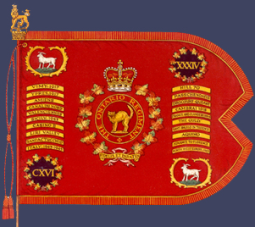Lyrics
D'ye ken John Peel with his coat so gay*?
D'ye ken John Peel at the break o' day?
D'ye ken John Peel when he's far, far a-way.
With his hounds and his horn in the morning?
Chorus
For the sound of his horn brought me from my bed,
And the cry of his hounds which he oftime led,
Peel's "View, Halloo!" could awaken the dead,
Or the fox from his lair in the morning.
D’ye ken that bitch whose tongue was death?
D’ye ken her sons of peerless faith?
D’ye ken that fox, with his last breath
Curs’d them all as he died in the morning?
For the sound of his horn, etc.
Yes I ken John Peel and Ruby too
Ranter and Royal and Bellman as true,
From the drag to the chase, from the chase to the view
From a view to the death in the morning
For the sound of his horn, etc.
And I’ve followed John Peel both often and far,
O’er the rasper fence and the gate and the bar,
From low Denton Holme up to Scratchmere Scar,
Where we view for the brush in the morning
For the sound of his horn, etc.
Then here's to John Peel with my heart and soul
Come fill – fill to him another strong bowl,
And we'll follow John Peel through fair and through foul
While we’re waked by his horn in the morning.
For the sound of his horn, etc.
